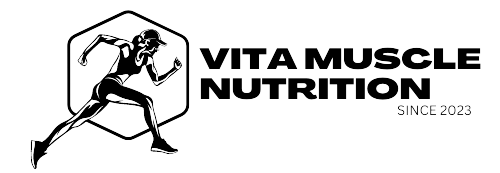When it comes to fitness and strength training, the phrase “PR” is sure to come up pretty regularly. But what exactly does mean What is PR in gym? entail, and why is it so important to fitness enthusiasts? In this thorough book, we’ll uncover the mystery of personal records, explain their relevance, and give you with vital insights on how to set and track your own.

What is PR in Gym?
What is PR in Gym? “PR” in the gym stands for “Personal Record.” It refers to an individual’s best degree of performance in a given activity or training plan. A personal record can be assessed in a variety of ways, including lifting the heaviest weight for a single repetition (1RM), completing the most repetitions with a specified weight (e.g., 5RM for five repetitions), or completing a specific workout or exercise regimen in the shortest amount of time. Individuals aim to increase their strength, endurance, and general fitness levels, and PRs are vital for measuring progress, setting fitness goals, and giving encouragement.
Understanding PR: Breaking Down the Basics
The Significance of PR
So, what is the point of creating and smashing personal records in the gym? Here are some persuasive arguments to find out What is PR in Gym? means:
- Measuring Progress: Progress reports give a clear and practical way to track your progress over time. You may be certain that you’re growing stronger and more fit as you continually outperform your past bests.
- Motivation: Pursuing new PRs may be quite motivating. The desire to lift more or do more reps might motivate you to push harder throughout your workouts.
- Goal Setting: PRs are fantastic objectives to set. They provide you with a goal to strive for, which may assist shape your training and keep you motivated.
- Enhanced Confidence: Breaking a personal record is a terrific feeling. It enhances your self-esteem and demonstrates your true capabilities.
- Variety: Pursuing personal records brings excitement and variation to your training. It reduces boredom and keeps your training interesting.

Types of PRs in the Gym
PRs may take many different shapes depending on the type of activity and your fitness goals. Let’s look at few examples of What is PR in Gym?:
1. 1-Rep Maximum (1RM)
The 1RM is the most weight you can lift in a single repetition of an activity. It is a commonly used strength measurement in powerlifting and weightlifting contests.
2. Repetition Maximum (RM)
This sort of PR represents the greatest number of repetitions you can do with a given weight. 3RM (three-rep max) and 5RM (five-rep max) are common versions.
3. Time-Based PR
Time-based PRs are essential for exercises such as CrossFit or circuit training. They comprise finishing a workout or a series of exercises in the smallest amount of time feasible or setting a new record for completing a specified programme in a set amount of time.
4. Volume PR
Volume PRs refer to the amount of work you can complete in a single exercise session. It can be quantified in terms of total weight lifted, completed sets, or repetitions.

How to Set and Achieve PRs
Setting and achieving personal records necessitates a methodical approach to training. Here are some steps to get you started:
- 1. Establish Specific Goals
Begin by outlining your fitness objectives. What do you want to gain from your training? Do you want to gain strength, muscular mass, or endurance? Setting precise goals will help guide your personal records efforts. - 2. Choose the Right Exercises
Choose workouts that will help you achieve your goals. Focus on bench press variants, as well as associated chest and tricep workouts, if you want to improve your bench press strength. - 3. Track Your Progress
Keep a training notebook or use a fitness app to keep track of your exercises. Take note of the weight, reps, and sets for each exercise. This documentation is critical for monitoring your progress and finding areas for improvement. - 4. Progressive Overload
To break personal records, you must gradually strain your muscles. This entails raising the weight, volume, or intensity of your exercises gradually over time. In each session, push yourself little beyond of your comfort zone. - 5. Recovery and Rest
Adequate rest and recuperation time are essential. Muscles require rest in order to mend and develop stronger. Make sure you get adequate sleep and include rest days in your training schedule. - 6. Nutrition Is Important
Your diet is very important in getting PRs. Consume a well-balanced diet rich in protein, carbs, and healthy fats to promote muscle growth and overall performance. - 7. Maintain Consistency
Maintaining and attaining PRs requires consistency. Maintain your workout regimen and don’t let failures discourage you. Progress may be gradual, but it is worthwhile.
Tracking Your PRs
One of the most rewarding things of PR is recognising how far you’ve progressed. Here’s how to keep track of your personal records effectively:
- 1. Maintain a Training Log
As previously said, keeping a workout journal is vital. Note the date, exercises, sets, repetitions, and weights utilised in your sessions. This log will be a useful reference tool. - 2. Visual Assists
Make graphs or charts to show your development over time. Seeing your progress in graphical form may be quite encouraging. - 3. PR Board
Some gyms feature personal records boards where members may exhibit their accomplishments. Take use of this option if your gym provides it to highlight your accomplishments and motivate others. - 4. Celebrate Your Achievements
Don’t be afraid to brag about your personal bests. Share your achievements with your friends and fellow gym-goers. Their words of encouragement and support may be quite motivating.

Common Difficulties and How to Overcome Them
While pursuing PRs is gratifying, it is not without its difficulties. Here are some frequent roadblocks and solutions:
1. Plateaus
It is common to reach a plateau when you struggle to beat your current PRs. Consider modifying your training programme, adding variation, or obtaining help from a trainer to break through.
2. Overtraining
Pushing yourself too hard without adequate rest might lead to overtraining and impede your growth. To avoid this problem, pay attention to your body and prioritise healing.
3. Injuries
Injuries might be a setback, but they don’t have to completely derail your development. Work with a physical therapist or trainer to alter your training and properly recuperate.
4. Mental Obstacles
Your thinking might sometimes hold you back. To overcome mental hurdles, visualise achievement, practise positive self-talk, and stay focused on your goals.

Conclusion
PRs are the gold standard for assessing strength and development in the fitness industry. They are proof of your devotion, hard work, and drive. So, the next time you wonder, “What is PR in gym?” remember that it’s more than just a number; it’s a sign of your accomplishments and a motivating factor in your fitness path.
Stay focused, consistent, and, most importantly, enjoy the experience as you set out to smash personal records. Your personal records are just ready to be broken, one rep at a time.

